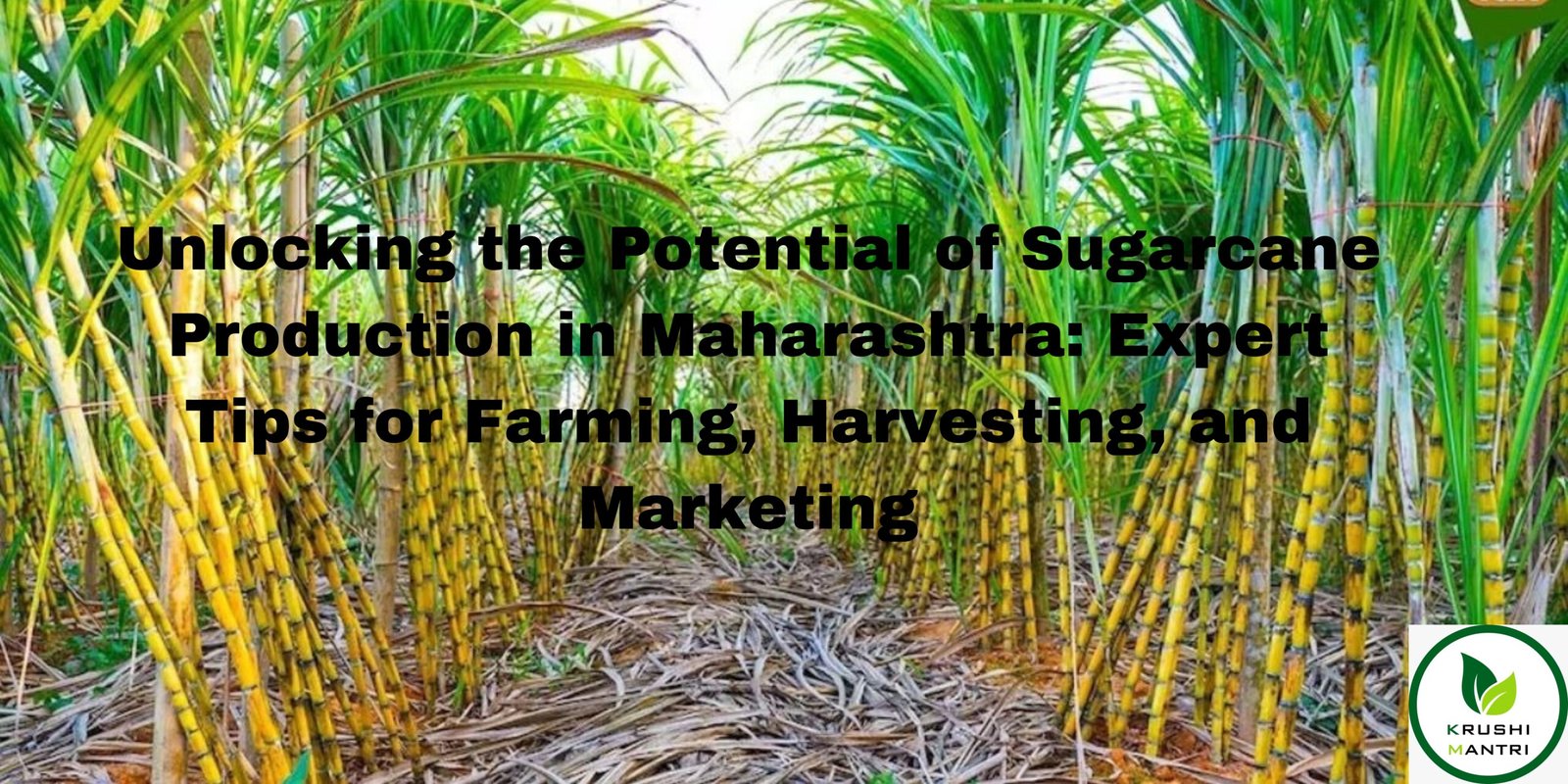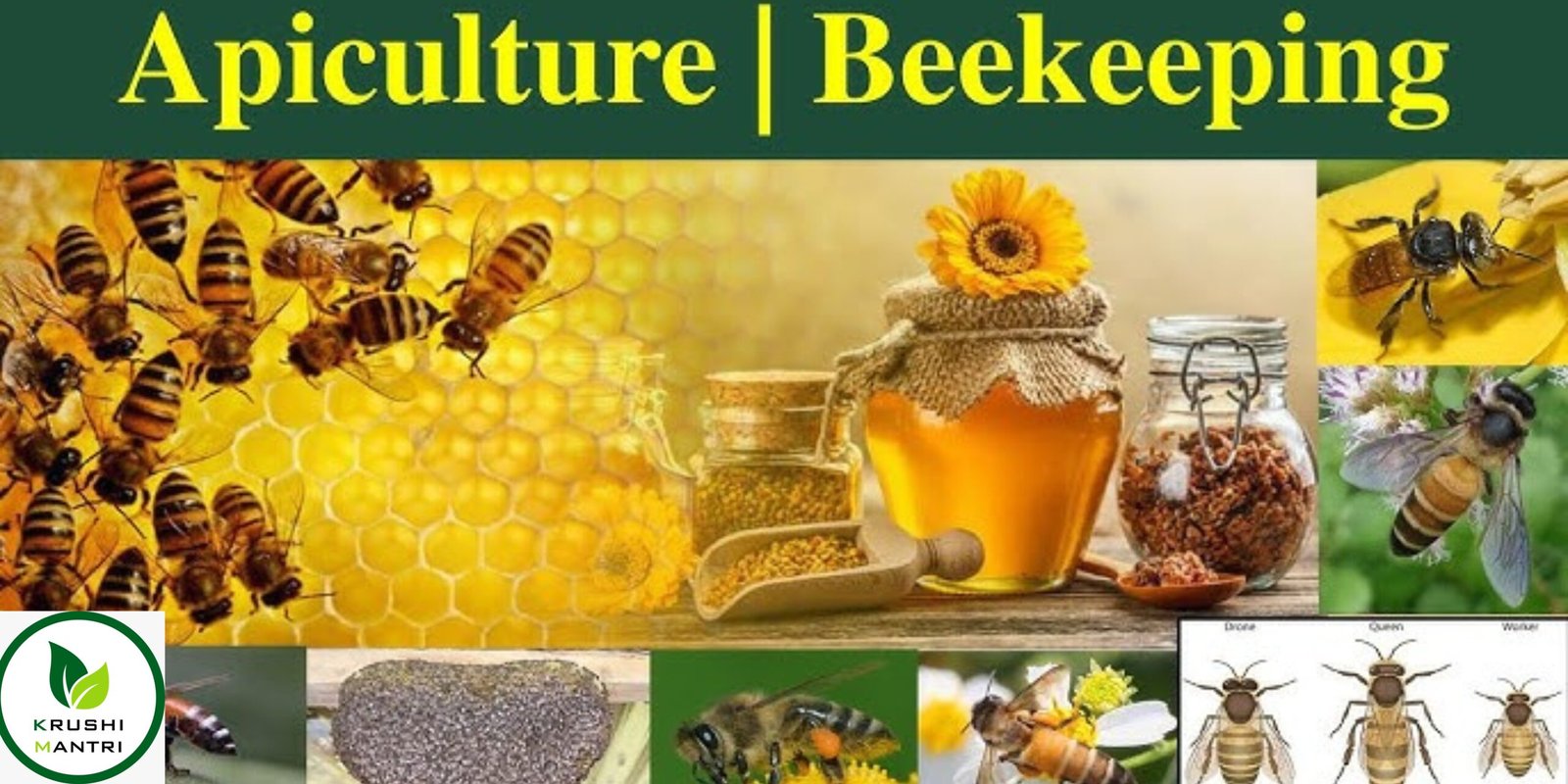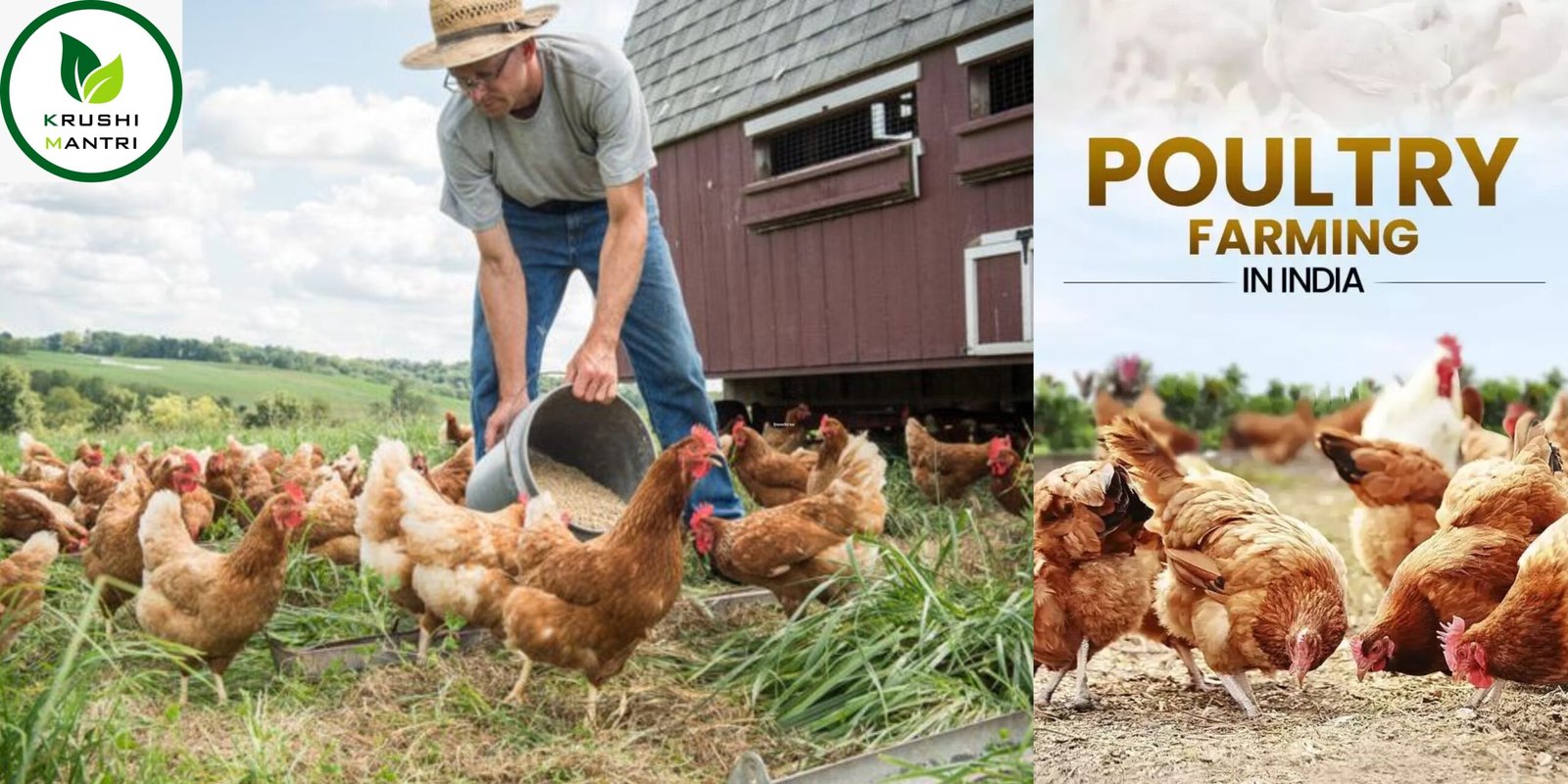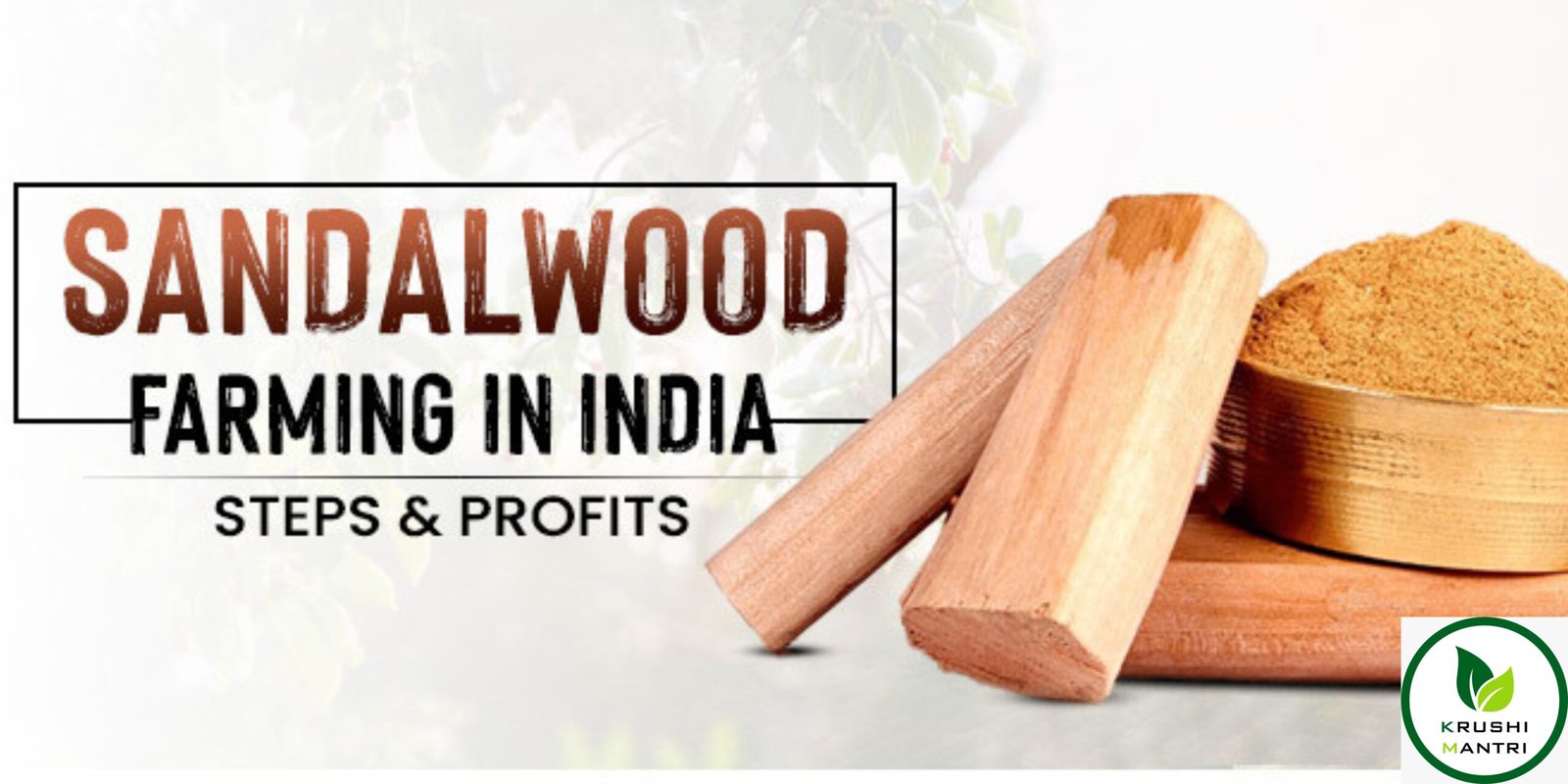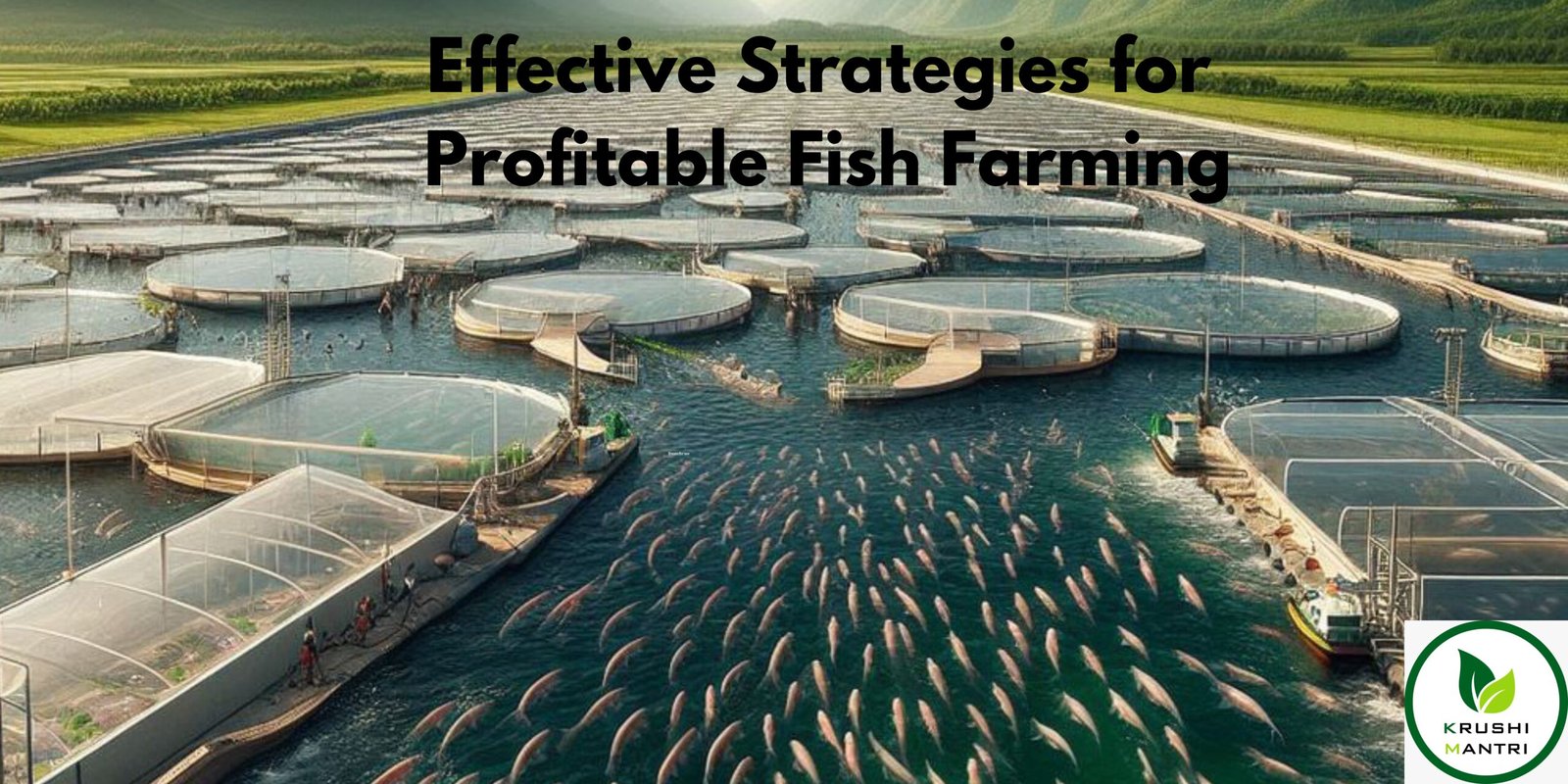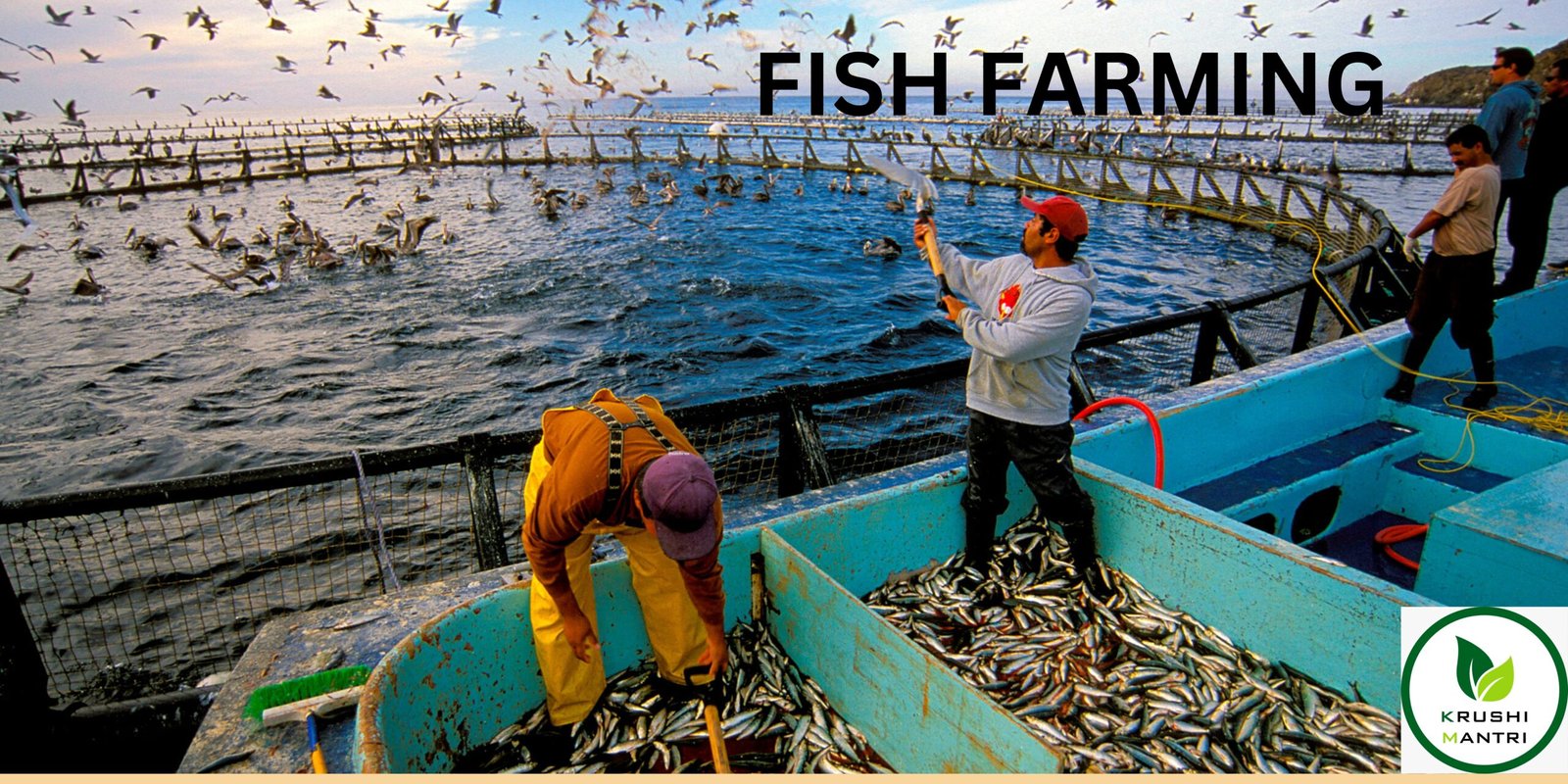The Green Gold Rush: Pistachios in India
Greetings, fellow farmers and agriculture enthusiasts! I am Krushimantri, and I am excited to share my personal experience and knowledge about pistachio cultivation in India with you. As you may know, pistachio cultivation is rapidly gaining popularity in India, and the country is now making its mark in the global pistachio market. With its diverse range of climates, India has several regions that are ideal for growing pistachios. Given the right conditions, pistachio trees can grow and flourish, yielding high-quality nuts that are not only delicious but also nutritious. In this article, we will delve into the fascinating world of pistachio cultivation in India, including the best practices for cultivation and harvesting, as well as the history and significance of this growing industry. So, sit back, relax, and let’s explore the world of pistachios together!
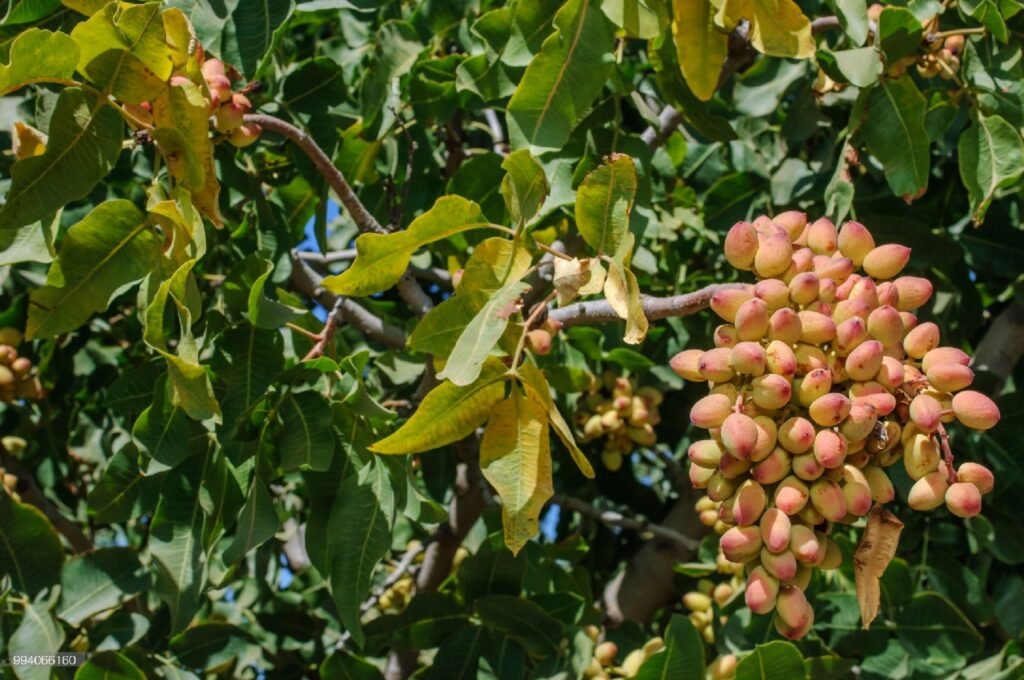
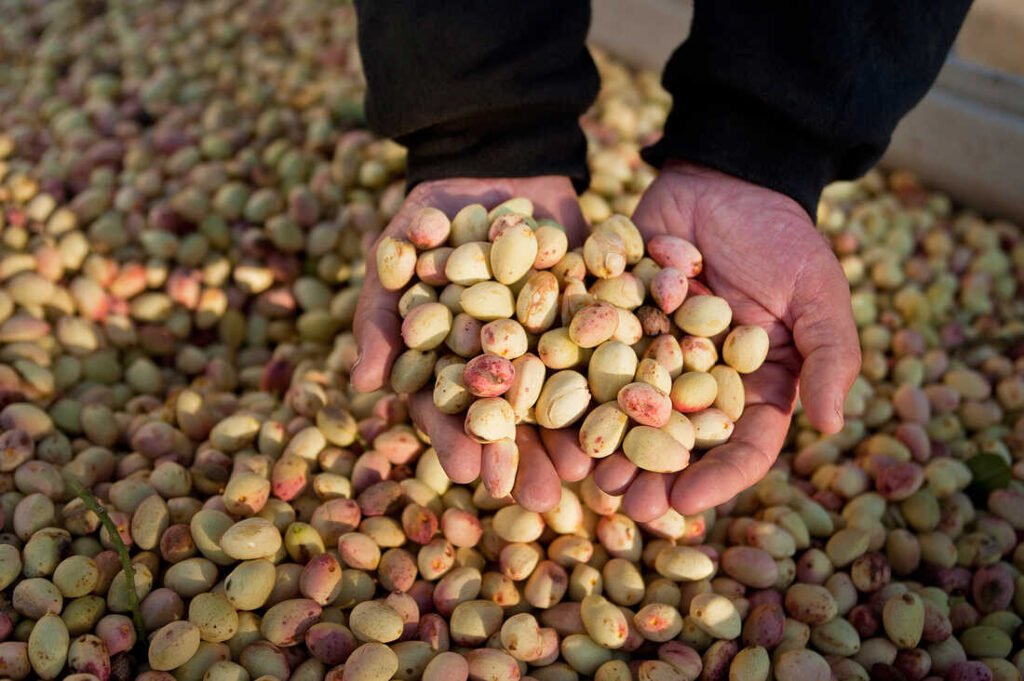
Types of Pistachio in India
Kerman:-
- Characteristics
- Kerman pistachios are known for their large size and elongated shape.
- They have a thin, light-colored shell that is easy to crack.
- The nuts themselves are light green in color and have a slightly sweet flavor.
- Production in India
- Kerman pistachios are one of the most popular types of pistachios grown in India.
- They are mainly cultivated in the states of Rajasthan, Gujarat, and Maharashtra.
- In recent years, there has been an increase in the cultivation of Kerman pistachios due to their high demand in both domestic and international markets.
- India’s Kerman pistachio production has been steadily increasing, with estimates of up to 10,000 metric tons of production annually.
Sirora:-
- Characteristics
- Sirora pistachios are a local variety found in the Jammu and Kashmir region of India.
- The nuts are small in size and have a thick shell.
- They are known for their rich flavor and are often considered to be one of the best-tasting varieties of pistachios.
- Production in India
- Sirora pistachios are primarily grown in the Jammu and Kashmir region of India.
- The trees are typically grown in rocky, hilly terrain and require a cold, dry climate to thrive.
- The nuts are harvested in the late summer months and are often sold both in-shell and shelled.
- While Sirora pistachios are not as widely produced as some other varieties, they are still a popular choice among consumers who appreciate their unique flavor and texture.
Peshawari:-
- Characteristics
- Peshawari pistachios are small to medium-sized nuts with a slightly darker shell than other varieties.
- The nuts have a unique flavor that is described as slightly sweet and nutty, with a slightly firmer texture than other types of pistachios.
- Peshawari pistachios are also known for their nutritional benefits, as they are high in protein, healthy fats, and essential vitamins and minerals.
- Production in India
- Peshawari pistachios are not native to India, but are grown in the Peshawar region of Pakistan, which is adjacent to India.
- In India, Peshawari pistachios are primarily grown in the Jammu and Kashmir region, where they are a popular local crop.
- The production of Peshawari pistachios in India is relatively small compared to other varieties, but they are still a valued and sought-after product among consumers who appreciate their unique flavor and texture.
Kale Ghuchi:-
- Characteristics
- Kale Ghuchi pistachios are a local variety grown in the Bikaner district of Rajasthan, India.
- They are small in size and have a thick, dark shell.
- The nuts have a unique flavor profile that is rich and nutty, with a slightly sweet aftertaste.
- Kale Ghuchi pistachios are also known for their high oil content, which makes them ideal for use in cooking and baking.
- Production in India
- The Bikaner district is the main region for Kale Ghuchi pistachio cultivation in India.
- The arid climate and soil conditions in this region are ideal for growing this variety of pistachios.
- Kale Ghuchi pistachios are primarily grown by small farmers who rely on this crop for their livelihoods.
- While the production volume of Kale Ghuchi pistachios is relatively small compared to other varieties, they are still highly prized by consumers who appreciate their unique flavor and quality.
Red Aleppo:-
- Characteristics
- Red Aleppo pistachios are known for their unique reddish hue and distinct flavor.
- The nuts have a slightly softer texture than other varieties, making them popular for use in desserts and pastries.
- Production in India
- While Red Aleppo pistachios are not as commonly grown in India as other varieties, they can still be found in some regions.
- Iran is the largest producer of Red Aleppo pistachios, but some Indian farmers have started cultivating the variety due to increasing demand from consumers who appreciate its unique flavor and appearance.
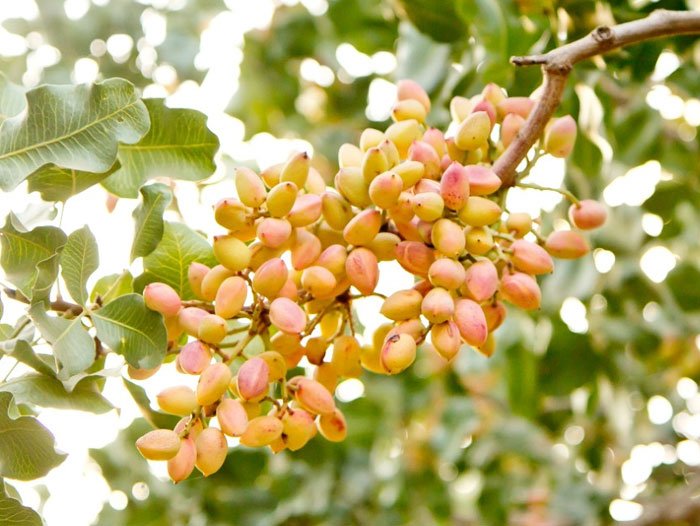
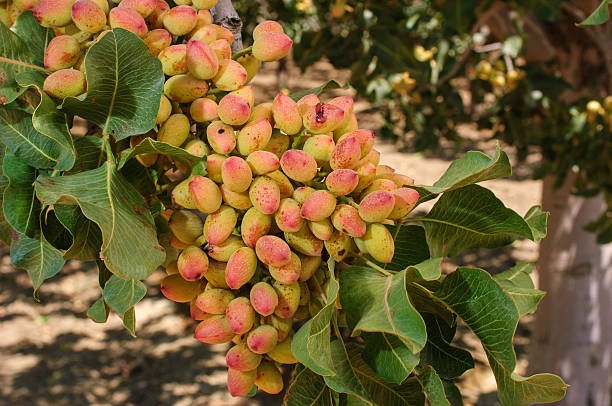
Read:- Maharashtra Farmer Success Story (Rs. 19 Lakh)
Requirements for Pistachio Cultivation in terms of Technical
Soil:-
The soil requirements for Pistachio cultivation in India are as follows:
- Pistachio trees can grow in a variety of soil types, but they thrive best in well-drained soils with a pH level between 7.0 and 8.0.
- Soil texture should be sandy loam or loam, as pistachios do not grow well in heavy clay soils.
- The soil should be rich in nutrients such as nitrogen, phosphorus, and potassium, as well as trace elements like zinc and iron.
- The soil should have good water holding capacity and adequate drainage to prevent waterlogging, which can damage the roots of the trees.
- The ideal depth of the soil for pistachio cultivation is between 1.5 and 2 meters.
- The soil should be free from salinity and alkalinity, which can inhibit growth and reduce yield.
- The optimal temperature for pistachio growth is between 15°C and 35°C, with a maximum temperature of 40°C and a minimum temperature of -10°C.
Climate:-
The climate requirements for Pistachio cultivation in India are as follows:
- Pistachio trees require a dry and arid climate, with low humidity and plenty of sunshine.
- They are typically grown in regions that have hot summers and cold winters.
- The ideal temperature range for pistachio trees is between 15-30°C.
- Pistachios require a significant amount of chilling hours during the winter months to promote proper blooming and fruit development.
- The trees are highly drought-tolerant, but they require regular watering during the growing season.
- Soil with good drainage is essential for pistachio cultivation, as waterlogged soil can lead to root rot and other issues.
- Pistachios are often grown in areas with high soil salinity, as they are able to tolerate salt levels that other crops cannot.
Overall, successful pistachio cultivation in India requires a combination of hot, dry weather and well-draining soil. Regions that meet these requirements, such as parts of Rajasthan, Punjab, and Jammu and Kashmir, are ideal for growing pistachios.
Planting Material:-
Here are the planting material requirements for Pistachios cultivation in India
- Pistachios are generally propagated through grafting, which involves taking a scion from a mature pistachio tree and attaching it to a young rootstock.
- The rootstock used for grafting should be compatible with the scion and should have good resistance to soil-borne diseases.
- Some common rootstock varieties used for pistachio cultivation in India include P. atlantica, P. integerrima, and P. terebinthus.
- The scion used for grafting should be selected from a mature, high-yielding tree with good nut quality.
- Pistachios are typically planted in well-drained soil with good fertility and pH levels between 7.0 and 8.0.
- The ideal planting density for pistachios in India is around 80-100 trees per acre, with spacing between trees ranging from 20-25 feet.
- Proper irrigation is crucial for the successful growth of pistachios, and farmers should ensure that their trees receive regular watering during the growing season.
Preparation of Lands:-
The preparation of lands requirements for Pistachios cultivation in India includes the following:
- Soil analysis is essential to determine the suitability of the land for pistachio cultivation. The soil should have good drainage and a pH level between 7.0 to 7.8.
- Pistachio trees require a lot of sunlight and warm temperatures, so the land should be in an open, sunny location with good air circulation.
- The land needs to be prepared by removing all weeds, stones, and other debris. The soil should be tilled and leveled to a depth of at least 30 cm.
- A proper irrigation system needs to be established to ensure that the pistachio trees receive enough water. Drip irrigation is the most effective method for pistachio cultivation.
- The land should be fertilized with organic and inorganic fertilizers to provide the necessary nutrients to the pistachio trees.
- The pistachio trees should be planted at a distance of 6-8 meters between each tree to ensure proper growth and development.
- Before planting the pistachio trees, a raised bed should be created to prevent waterlogging and ensure proper drainage. This also helps in maintaining soil temperature and moisture.
Planting Time and Spacing:-
- Pistachio trees should be planted during the winter season, typically from December to February.
- The ideal temperature for pistachio cultivation is between 20-25 degrees Celsius.
- Pistachio trees should be planted in well-drained soil that is rich in nutrients.
- The spacing between pistachio trees should be approximately 6-7 meters to allow for proper growth and development.
- The depth of the planting hole should be around 1 meter, and it should be wide enough to accommodate the root ball of the sapling.
- It is important to plant pistachio trees in an area that receives ample sunlight and is protected from strong winds.
- Proper irrigation is essential for the growth and development of pistachio trees, and they should be watered regularly during the first few years of growth.
Manures and Fertilizers per Plant:-
- Organic manures such as farmyard manure or compost can be added to the soil before planting to improve soil fertility.
- Nitrogen is the most important nutrient for pistachio trees, and it is recommended to apply 100-150 kg/ha of nitrogen per year.
- Phosphorus and potassium are also important, and 50-75 kg/ha of phosphorus and 100-150 kg/ha of potassium are recommended annually.
- Zinc is another important micronutrient for pistachio trees, and it is recommended to apply 5-10 kg/ha of zinc sulphate.
- Fertilizers should be applied in two to three doses during the growing season, with the first dose applied before flowering and subsequent doses applied at regular intervals.
- Over-fertilization should be avoided as it can lead to salt accumulation in the soil, which can harm the tree and reduce crop yield.
Irrigation:-
- Pistachio trees require a moderate amount of water, but can be sensitive to overwatering or waterlogging.
- The amount of water required depends on several factors, such as soil type, climate, and tree age.
- In general, pistachio trees require more water during the early stages of growth and less as they mature.
- Drip irrigation is the most common method used for pistachio cultivation in India, as it allows for precise control of water delivery and minimizes water loss through evaporation.
- The frequency and duration of irrigation depend on factors such as soil moisture levels, weather conditions, and tree age.
- In some regions of India, farmers also use groundwater or rainwater harvesting techniques to supplement irrigation water and reduce dependence on surface water sources.
Pruning and Training:-
- Pruning and training are important practices in pistachio cultivation that help to maintain tree health, increase yield, and improve nut quality.
- Pistachio trees are typically pruned in the winter or early spring when the trees are dormant.
- The main objectives of pruning are to remove dead or diseased wood, maintain tree structure and shape, and promote the growth of new branches.
- Pistachio trees require a strong central leader, which is achieved through the removal of competing branches and careful training of the main stem.
- Young trees should be trained to have a central leader with a clear trunk of at least 24 inches before branching out.
- As the tree grows, lateral branches should be pruned to maintain the desired shape and to prevent the tree from becoming too dense.
- Pruning should be done carefully to avoid damaging the tree, and the use of proper pruning tools is important to ensure clean cuts and minimize damage to the bark.
- Pruning should also be done with consideration for the timing and intensity of pruning, as this can affect the yield and quality of the crop in the following year.
Intercrops:-
- Pistachio trees require full sunlight, so any intercrops should be selected to avoid shading the trees.
- Intercrops should be selected based on their compatibility with pistachios, as well as their potential to improve soil quality and provide additional income for farmers.
- Leguminous crops, such as beans, peas, and lentils, are often recommended as intercrops because they help fix nitrogen in the soil and can provide additional income for farmers.
- Cover crops, such as clover, rye, and vetch, can also be planted between rows of pistachio trees to help control weeds and improve soil quality.
- Care should be taken to avoid planting intercrops that are susceptible to diseases or pests that could spread to the pistachio trees.
- Intercrops should be managed carefully to ensure they do not compete with pistachio trees for water or nutrients.
- In some cases, intercrops may need to be removed before the pistachio trees reach maturity to avoid competition and ensure a good harvest.

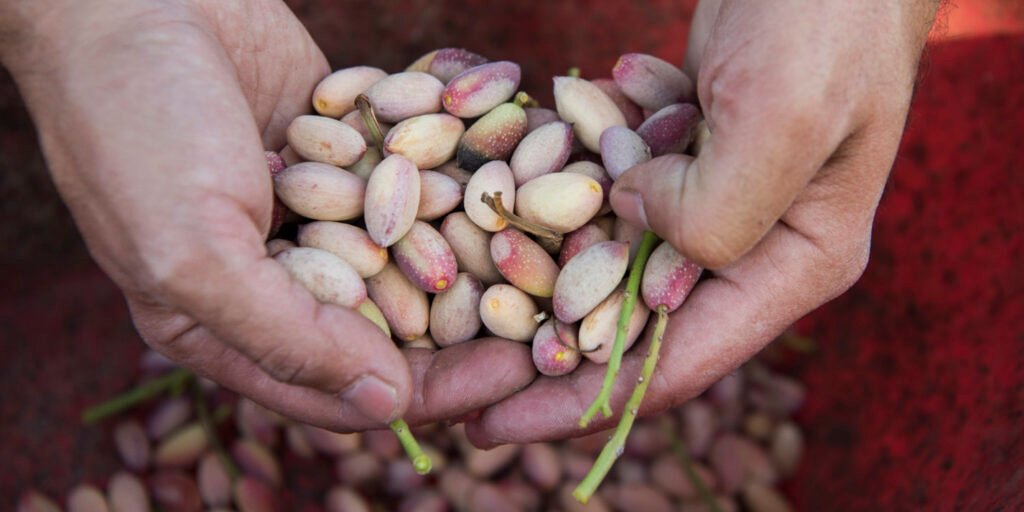
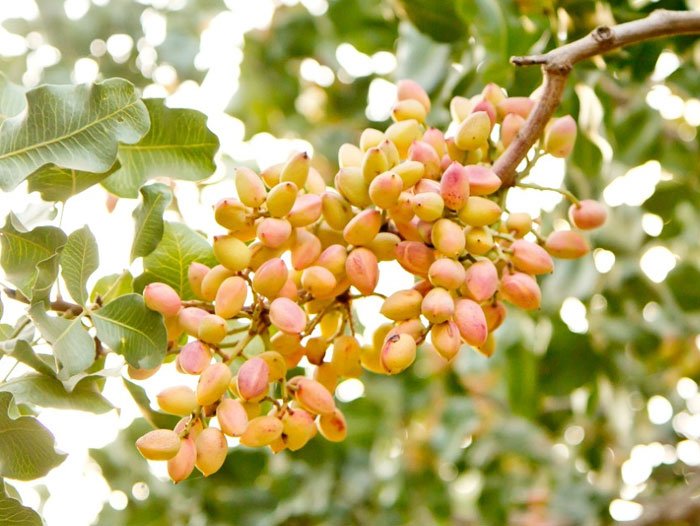
Bahar Treatment and it’s Need:-
- Bahar treatment is a process that involves exposing pistachio trees to cold temperatures to promote flowering and fruit production.
- The treatment is typically done in winter, when the temperature drops to around 0-7°C, which is ideal for the process.
- Pistachio trees require a certain number of cold hours (between 800 to 1200 hours) for successful Bahar treatment.
- The duration of Bahar treatment depends on the variety of pistachio being cultivated, with some requiring longer periods of cold exposure than others.
- In India, Bahar treatment is typically done in the northern regions, such as Jammu and Kashmir, Himachal Pradesh, and Punjab, where the climate is suitable for the process.
- Successful Bahar treatment is essential for high-quality pistachio production, as it helps to promote flowering and fruit set, resulting in a larger yield.
Controlling of Fruit Drop:-
- Water management: Pistachio trees require moderate watering during the growing season, but excessive watering can lead to fruit drop. Proper water management is essential to prevent water stress in the trees, which can cause fruit to fall prematurely.
- Nutrient management: Pistachio trees require specific nutrients at different stages of growth. Proper fertilization and soil management can help prevent nutrient deficiencies that can lead to fruit drop.
- Pest and disease management: Pests and diseases can cause significant damage to pistachio trees, leading to fruit drop. Effective pest and disease management is crucial to prevent losses.
- Thinning: Overcrowded fruit on the tree can lead to fruit drop. Thinning the fruit can help improve the quality and quantity of the remaining nuts on the tree.
- Harvest timing: Timing the harvest of pistachios is crucial to prevent fruit drop. Waiting too long to harvest can cause nuts to fall from the tree due to natural abscission.
Read:-Profitable Goat Farming: An Investment Guide to Expenses and Earnings – No.1 Project Report
Pest Control:-
Here is a table outlining some common pests and diseases that can affect pistachio trees in India, as well as some methods for pest control:
| Pest/Disease | Symptoms | Control Methods |
|---|---|---|
| Aphids | Small, green insects that suck sap from the leaves and stems of the tree. | 1) Spray the trees with insecticides containing neem oil, pyrethrin, or other natural or synthetic chemicals. 2) Encourage the natural predators of aphids, such as ladybugs and lacewings. |
| Spider mites | Tiny, red or yellow mites that spin webs on the leaves and suck sap from the tree. | 1) Spray the trees with insecticides containing neem oil or other natural or synthetic chemicals. 2) Use a high-pressure water spray to knock the mites off the leaves. |
| Pistachio twig borer | Larvae that bore into the branches of the tree, causing damage and reducing yield. | 1) Prune off affected branches and destroy them. 2) Apply insecticides to the tree during the dormant season to kill the larvae before they can cause damage. |
| Verticillium wilt | A fungal disease that causes leaves to wilt and die back, eventually killing the tree. | 1) Plant disease-resistant varieties of pistachio trees. 2) Maintain good soil drainage and avoid overwatering. 3) Apply fungicides to the tree to control the spread of the disease. |
| Root rot | A fungal disease that attacks the roots of the tree, causing them to rot and reducing the tree’s ability to take up water and nutrients. | 1) Avoid overwatering and ensure good soil drainage. 2) Apply fungicides to the soil around the tree to control the spread of the disease. |
It’s worth noting that these are just a few examples of the many pests and diseases that can affect pistachio trees, and that the best methods for pest control will depend on the specific situation and conditions of the orchard. It’s important for farmers to stay informed about the latest research and best practices for pest control in order to ensure a healthy and productive crop.
Read:-Sweet Success: How to Make a Profit of ₹160,000 with Honey Bee Farming
Harvesting:-
| Stage | Description |
|---|---|
| Timing | Pistachio trees are usually harvested once a year, typically between August and October. |
| Preparation | Before the harvest, the ground around the trees is cleared of any debris to make it easier to collect the nuts. |
| Harvesting | There are two main methods of harvesting pistachios in India: manual and mechanical. |
| Manual harvesting | This method involves shaking the branches of the tree to release the nuts, which are then collected by hand or using nets spread on the ground. |
| Mechanical harvesting | This method uses specialized equipment that shakes the tree to release the nuts, which are then collected using conveyor belts or suction devices. |
| Cleaning and sorting | Once the nuts have been harvested, they are typically cleaned and sorted to remove any debris, twigs, or imperfect nuts. |
| Drying | After cleaning and sorting, the nuts are spread out in a well-ventilated area to dry. This can take several days, depending on the weather and humidity levels. |
| Roasting | Many pistachios are roasted before being sold to enhance their flavor and texture. This is typically done in large ovens or roasters. |
| Packaging and storage | Once the nuts have been roasted and cooled, they are packaged in airtight containers to preserve their freshness and flavor. They can be stored for several months under the right conditions. |
We hope this blog is vital for you; hence more information regarding any agriculture sector, stay tuned with Krushimantri.com
And more information regarding any travel, stay turned with urbanchats.com
A Complete Guide to Pista Farming in India: Everything You Need to Know
Pistachios in India: The Complete Guide to Cultivation and Harvesting
Where Are Pistachios Grown in India? Exploring the Best Pistachio Growing Zones
